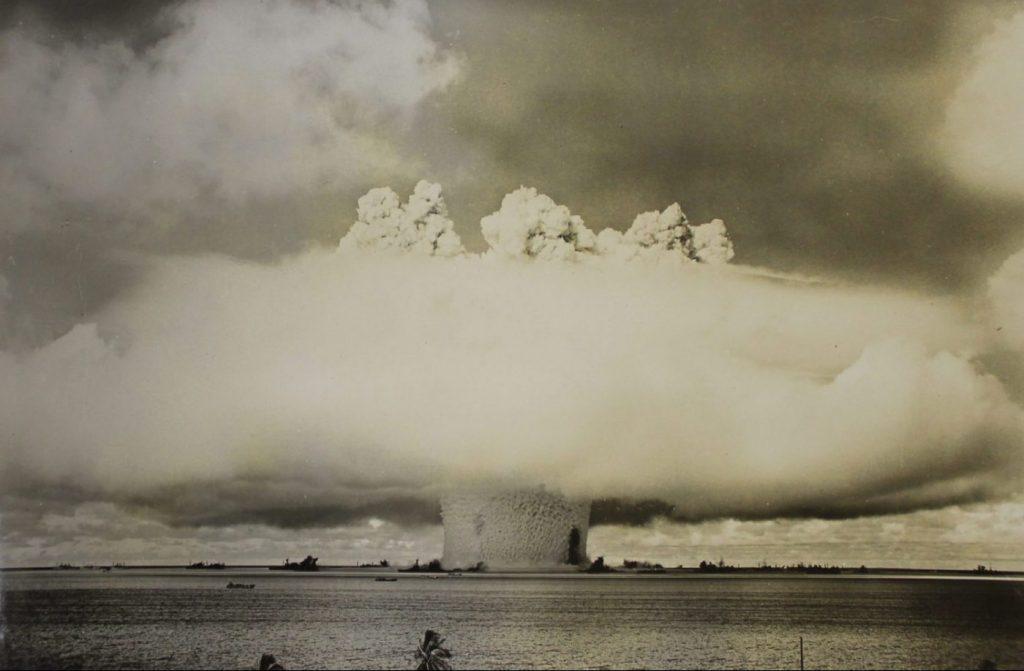
Amid the nightmare of a global pandemic and the crumbling pillars of nuclear arms control, the leadership of one of the few stars in the nuclear firmament still shining bright is due for vote in Vienna on 25–27 November.
The Comprehensive Nuclear-Test-Ban Treaty is a curious beast. When negotiations were stuck in the fossilised Conference on Disarmament in Geneva, Australia led the rescue effort by taking it for adoption to the UN General Assembly in 1996. Uniquely among arms control treaties, if not all treaties, it’s fully operational without legally having entered into force. It’s been signed by 184 countries and ratified by 168. Annex 2 lists 44 countries whose ratifications are required for entry into force. Of the 44, China, Egypt, Iran, Israel and the US have signed but not ratified. India, North Korea and Pakistan have not signed.
The prospects of all eight holdout ratifications happening in my lifetime are nil, and it’s a waste of time and effort to worry about it beyond ritualistic reaffirmation. The formula might have been deliberately designed to frustrate the treaty’s entry into force. The standard formula specifies the number of ratifications needed followed by the number of days to a treaty coming into force. Thus with the 2017 Treaty on the Prohibition of Nuclear Weapons, only 50 ratifications were needed. The 50th was received on 24 October and it will have legal force on 22 January, despite none of the bomb-possessing countries signing.
The test-ban treaty departs radically from this. The obvious question, which some of us raised at the time, is: what would have happened to other treaties with an equivalent formula? The emphatic answer is that none of them, not even the Nuclear Non-proliferation Treaty as the cornerstone of the global nuclear order, would be legally in force even today.
The Comprehensive Nuclear-Test-Ban Treaty Organization (CTBTO) is the implementing arm of the test-ban treaty. Until it enters into force, a provisional technical secretariat is responsible for verifying the ban on nuclear tests through the international monitoring system of 301 facilities and site inspections. Australia hosts 22 monitoring stations and a laboratory as part of the international system—the third largest number of facilities in the world.
The provisional secretariat is headed by an executive secretary who oversees 260 staff and an annual budget of around US$130 million. The executive secretary leads efforts on the treaty’s verification system and ensures that all member states receive the data from monitoring stations, particularly when a nuclear test (or earthquake) is detected. The officeholders to date have been Germany’s Wolfgang Hoffmann (1997–2005), Hungary’s Tibor Tóth (2005–13) and Burkina Faso’s Lassina Zerbo since 2013.
Zerbo’s second term will be completed on 31 July. By the close of nominations on 9 October, the only name put forward to succeed him was Robert Floyd from Australia. However, in response to a query from the governing board chair, Algeria’s Faouzia Mebarki, in June Zerbo said if member states wished, he would be available to serve another term. (Disclosure: I know both Floyd and Zerbo; being based in Canberra, of course I have had many more interactions with Floyd.)
As a student of UN-centred global governance, I’m a strong proponent of two-term limits for chief executives of all international organisations. In the case of the CTBTO, this is reinforced by precedents and by Article 49 of the treaty, which sets a two-term limit for the director-general of the secretariat once the treaty has entered into force. For the sake of the institutional integrity of the office and the organisation, the dignified option for successful and exemplary chief executives is a graceful exit for having done the job well and earned the international community’s gratitude. The moral and political authority of the executive secretary to ensure compliance with the test-ban treaty’s provisions would be fatally undermined if the incumbent violated the treaty on the sophistry that the Article 49 limit didn’t apply to the present situation.
Member states circumvented the legal impediment to entry into force by bringing the international monitoring system into operation for all practical purposes as if the treaty were already in force. Part of that must include applying the term limits set out in the treaty. Zerbo has done a very good job in consolidating the organisation’s operational monitoring system to the point of impressive credibility. If a good prospective candidate wasn’t available, then, but only then, member states might consider a third term for him.
Floyd is a good, indeed an impressively credentialled candidate to carry on the critical work of the CTBTO. A scientist by training, he is currently director-general of the Australian Safeguards and Non-Proliferation Office, the national authority for implementation of various treaties to control weapons of mass destruction, including the test-ban treaty. With a proven track record of high-level technical, managerial and diplomatic leadership at the interface of technical and political issues, he plans, if selected, to build consensus in international efforts to advance nuclear non-proliferation and disarmament. It’s not as though Australians have historically been or currently are overrepresented in leadership positions of international organisations.
The Indo-Pacific has been the site of seven different sets of nuclear tests carried out by China, France, India, North Korea, Pakistan, the UK and the US since 1945. Australia’s history in relation to nuclear testing is conflicted. Between 1956 and 1963, Britain conducted several nuclear tests on Australian territory that left long-lasting scars on Indigenous populations in particular. From 1966 to 1996, France conducted nearly 200 atmospheric and underground tests in French Polynesia. This galvanised sentiment against nuclear testing across the Pacific and turned Australia and New Zealand into global campaigners for a complete ban on testing.
Looking ahead, the CTBTO needs to closely watch developments in North Korea, which could soon resume nuclear testing. Conversely, if North Korea is denuclearised against expectations, the CTBTO will have a critical role in the subsequent verification machinery. Either way, having an experienced Indo-Pacific hand at the helm will be an asset.